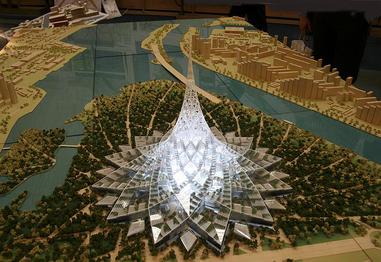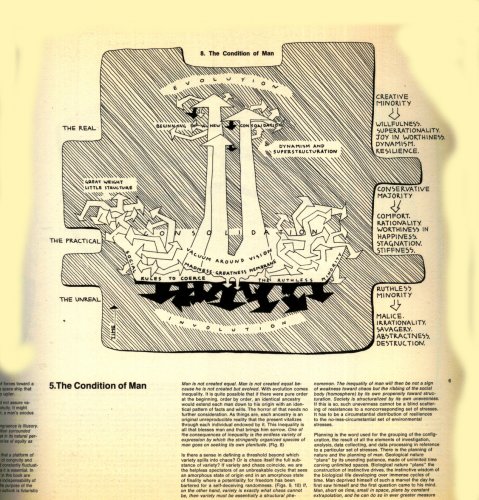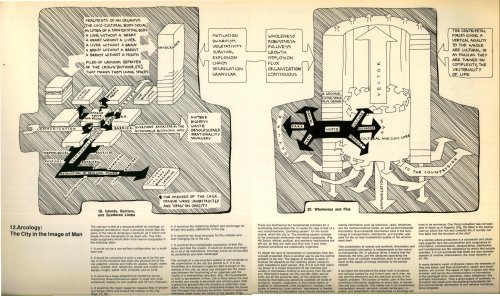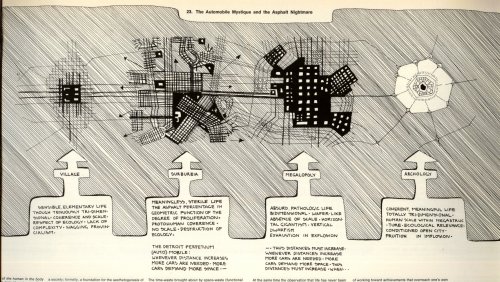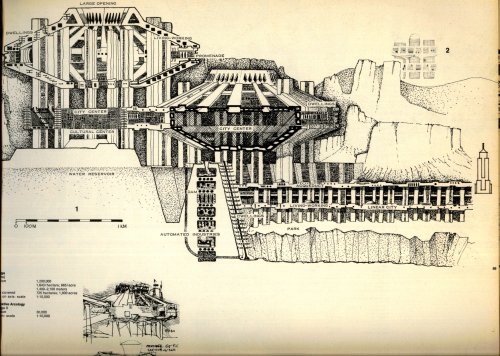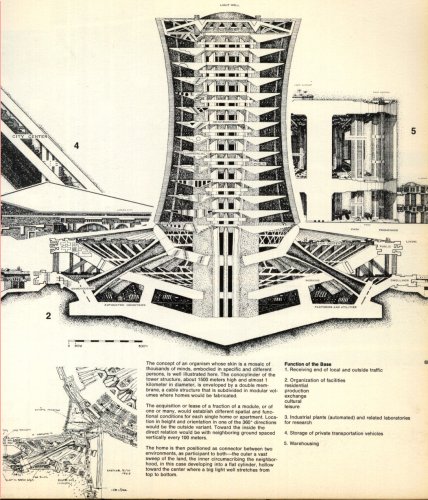Not to dive too deeply into the "side" debate about "disaster," "climate-change," and "logic" behind a NEED for an Arcology, (because frankly I doubt anyone's actually going to listen to MY opinion since most folks have made up their minds

let me just go back and quote this:
Arjen said:
A drastic climate change is not needed for disaster. Local droughts, as experienced in Africa's Sahel zone, will cause wide-spread famine.
It can be "part-of" such as Yosemite suddenly going off and plunging the world into an extended cool period, or the sun getting suddenly a lot more active due to unforseen circumstances. (I recall a story that postulted what might happen to solar output if the solar system suddenly ran into a section of cosmic dust or a higher hydrogen count) One rather worrying possibility is the methane-hydrates under the mud on the continential shelves, (methane being so much better at being a 'greenhouse gas" than whimpy CO2

) if you could figure out how to do it in, say a few days rather than the expected "hundreds of years" that it would normally occur. (It would be a rather explosived mixture too at that point over such a short period... Hmmmm....

)
However for the most part the idea of "sudden" world weather changes is wrapped tightly around the VERY vauge "theory" of "tipping-points" or conditions where the effects become "run-away" and accellerate rapidly.
Unfortunatly, what it is ACTUALLY meant by "Abrubt Climate Change" and how it is actually applied are two very different, distinct and things. For the most part the idea of "run-away" effects, "Abrupt" climate change, etc MEAN one thing scientifically and (again unfortunatly) are MEANT when spoken in context to the entire Climate Change "debate" as something entirly different. The former is a known and accepted form of science and the latter is extremly out of context, wrong, and out-right dishonest in its nature.
Making this "official" we'll run here:
http://en.wikipedia.org/wiki/Abrupt_climate_change
Probably not the "best" resource but it DOES prove out my point quite handly. First lets look at the definition:
According to the Committee on Abrupt Climate Change of the
National Research Council:[1][9]
<blockquote>"There are essentially two definitions of abrupt climate change:
</blockquote>
- In terms of physics, it is a transition of the climate system into a different mode on a time scale that is faster than the responsible forcing.
- In terms of impacts, "an abrupt change is one that takes place so rapidly and unexpectedly that human or natural systems have difficulty adapting to it".
These definitions are complementary: the former gives some insight into how abrupt climate change comes about ; the latter explains why there is so much research devoted to it."
<blockquote></blockquote>More to the point I made a little above there is the "scientific" reason FOR the phenomon, followed by the "reason-to-panic" about it as a "rational" for worrying about it.
The article then goes on to explain that we have scientifically determined that there have been three "periods" of Abrubt Climate Change for sure and one "maybe" all of which took thousands of years to actualy CHANGE the climate, but in doing so caused great dislocations, die-offs and mass extictions of species.
The problem is there is a consistant attempt to tie "local/regional" climate effects and observations into a whole model for GLOBAL weather and climate. While they ARE all part of the same system and DO have some intereffects the ACTUAL interaction is far less than is claimed and the idea of "tipping points" (
http://en.wikipedia.org/wiki/Tipping_point_(climatology)) is in and of itself ill-defined and almost impossible to catagorize.
Furthermore, meaningful weather forecasts are limited to less than a week. Predicting the weather is difficult enough, reliably influencing it is beyond our means. I think that will elude us for quite some time.
If you "believe" this then you have a problem... You state later:
In our own solar system, we have two examples of planets that suffered runaway processes that culminated in both planets being stuck with environments hostile to life as we know it. We don't know exactly what happened to Venus and Mars. We do suspect that some 650 million years ago,
Earth itself suffered another runaway process that turned our planet into a giant snowball. Sometimes a planet has a way of recovering. Sometimes it doesn't. We don't know what causes some of these runaway processes, we don't know which processes are irreversible. Until we do, global cimate control is a bridge too far.
First of all, let me point out to you and everyone else an important fact: Mars is NOT and "example" of a planet that suffered "runaway" process' as you imply. It is in fact of an example of a smaller-than-Earth planet that underwent prolonged and natural evolution combined with its distance from the Sun and inability to retain a sufficent atmosphere to allow it to retain liquid water led to the demise of its living conditions. We know pretty much EXACTLY what "happened" to Mars, what we don't know is the specific details and what we DO know is that what happened on Mars can NOT happpen to the Earth.
Second, Venus is not Earth and there is no way for Earth to become Venus. Venus shows no signs of having gone through the phase where a large majority of the Earth's Carbon was locked away into rock. We can not heat the Earth enough without a SIGNIFICANT EXTERNAL input of heat to re-release that carbon whereas Venus has been subjected to a significant heating event that is still evident today. "Global Warming" can NOT turn Earth into Venus because the MAXIMUM temperature possible with ALL the possible inputs (including burning all our "fossil" fuels, adding the total Methane from the oceans, etc) won't raise global temperatures enough to boil off the worlds oceans. (It will in fact be a little less "hot" than when the dinosaurs roamed the Earth) Which is what it would take to introduce enough water-vapor (also a "greenhouse-gas" btw) to overcome the increased albedo effect of high altitude water vapor which would decrease the solar gain of Earth.
Finally if you don't believe we can "influance" the weather/climate I welcome you to the 'club' which while admitting that "Global Warming" is happening do NOT believe that it's mankinds fault which is what most Global Warming "believes" insist upon. Mostly because if people can be "blamed" for Global Warming then those same "believers" don't have to face the possibility that Global Warming is part of the "natural" cycle and that sticking by their "convictions" would mean they have to simply shut up and accept its effect on humans and the Earth.
Having said that though I DO happen to belive humans CAN effect the global climate if we were to try hard enough. I don't see us having the political will and public support to do so however and I for SURE don't believe we should given our current lack of knowledge of how the entire global climate works because we will probably do it wrong. It wouldn't be a "sudden" disaster I"m sure, and I doubt it would lead to great and "sudden" changes as is being suggested since climate doesn't seem to work in that fashion. But given the current non-scientific bias for WHAT we should "do" without the required depth and understanding of what is happening and how global climate works in detail I'm pretty sure any major program (and anything less won't effect any real change) would inevitably be the wrong thing to do.
None of the stuff OBB proposed would "work" on global climate without the scale being "global" in size, (and cost) though it would be pretty easy to "sell" to the general public as "doing-something" at least. However cost-wise a single Arcology would inevitably be much cheaper to build. You just can't "justify" something like that by using "global-warming" or some unspecified possible "disaster" because it is a rather simple fact that those WITH the "money" and power to build an "full-size" Arcology are not going to be able to be convinced by any "realistic" odds. That's what backers have been trying since the '60s to do with everything from the "Population-Bomb" to pollution and failing every time.
Paolo's students and "believers" at least went out and tried to build something which I'll give em

But trying to "scare" folks into seeing the "logic" behind a planned human habitat never works and I don't think it ever will.
Now going back to the "begining" here if something like the Ross Ice Shelf let go, some of the Greenland glaciers suddenly came apart, Yellowstone goes up, etc and there are sudden and massive movements of large segments of the population somewhere it's possible that someone would set up an Arcology for reasons of space
Randy

